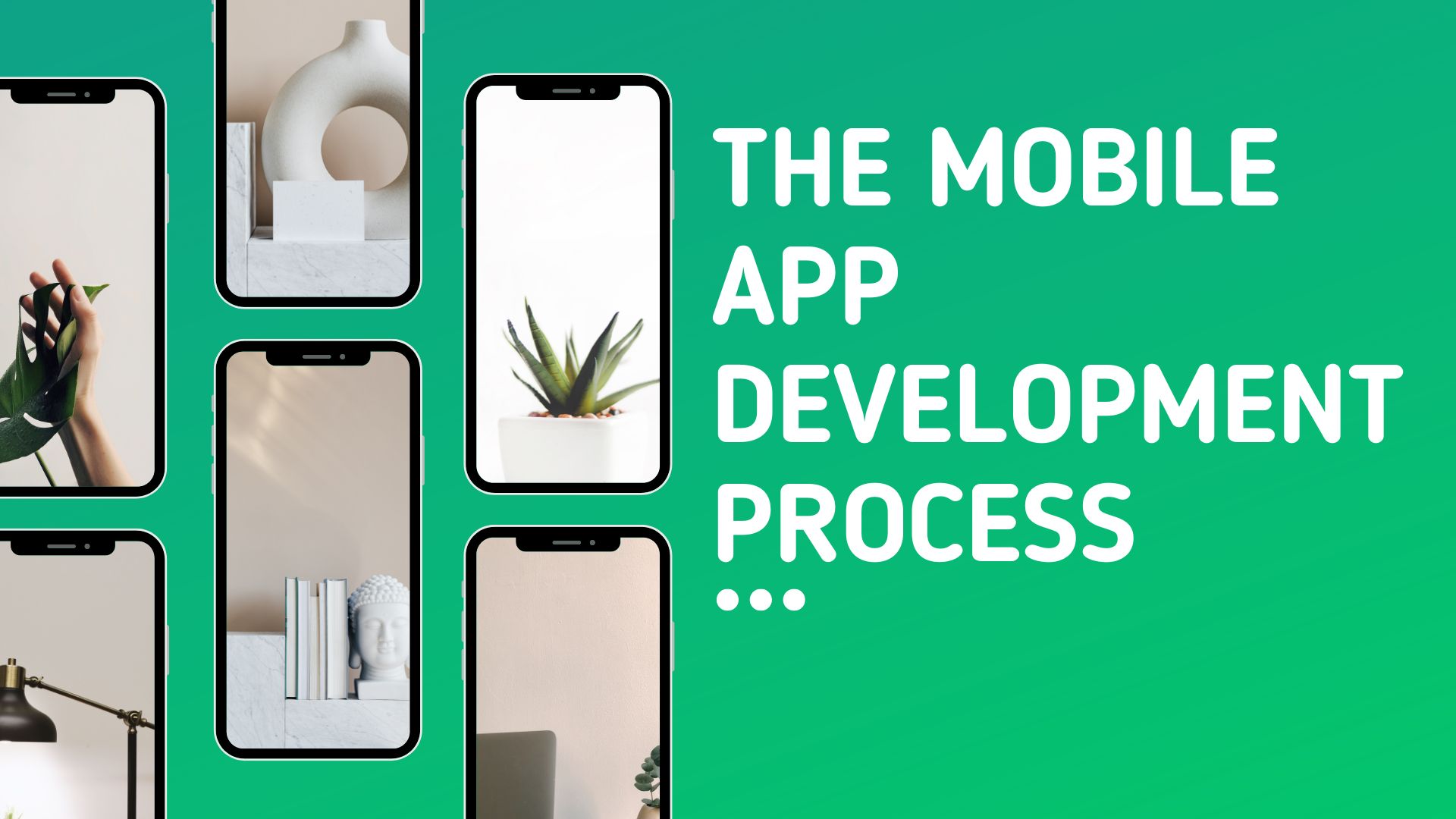This website uses cookies so that we can provide you with the best user experience possible. Cookie information is stored in your browser and performs functions such as recognising you when you return to our website and helping our team to understand which sections of the website you find most interesting and useful.
Behind the Scenes of a Top Mobile App Development Company: How the Best Deliver Excellence

In today’s digital age, mobile apps have become an essential part of our lives. From shopping to banking, we rely on them for various services. The demand for mobile app development services has skyrocketed in recent years, and with it, the competition for the top spot among mobile app development companies. In this article, we will take a look at the journey of becoming a top mobile app development company and the key elements that make a successful mobile app.
The Journey to Becoming a Top Mobile App Development Company
Identifying the Market Needs
Every industry has its trends and customer expectations that need to be identified and addressed. To become a top mobile app development company, it’s essential to research and identify the market needs while staying ahead of the competition. A deep understanding of the customer requirements, coupled with insights on market trends, helps top developers create solutions that cater to customer demands and meet the market’s needs.
The process of identifying market needs begins with thorough research. This research includes analyzing customer feedback, market trends, and competitor analysis. By understanding what the market needs, the company can create a product that is tailored to the customer’s requirements. It also helps the company to stay ahead of the competition and be innovative in their approach.
Assembling a Talented Team
A mobile app development company’s success depends largely on the talent pool it has assembled to take on development projects. It’s crucial to have a team with a mix of developers, designers, product managers, and quality analysts to bring diversified ideas and perspectives to the development process. The experience and skillset of team members also play a substantial role in executing the project efficiently and delivering the best quality.
Building a talented team requires more than just finding individuals with the right skillset. It also involves creating a work environment that fosters creativity and innovation. Top mobile app development companies invest in their employees by offering training and development programs, providing opportunities for career growth, and promoting a culture of collaboration and teamwork.
Adopting Agile Methodologies
To keep pace with the fast-changing technology industry, the top mobile app development companies adopt agile methodologies. This helps with improved project management, quick feedback cycles, and faster delivery. An agile approach enables developers to work closely with clients, delivering incremental changes along the development timeline, reducing the time it takes to go from ideation to the final product.
Agile methodologies involve breaking down a project into smaller, more manageable tasks. The development team then works on these tasks in short cycles, known as sprints. This approach allows for continuous feedback and adaptation, ensuring that the final product meets the customer’s needs and expectations.
Embracing Cutting-Edge Technologies
Top mobile app development companies are always on the hunt for the latest technologies that can improve the app’s user experience, security, and scalability. Embracing cutting-edge technologies helps in creating an application that can withstand ever-changing customer needs and new technology trends. It also helps in building trust among users, improving brand loyalty.
Some of the cutting-edge technologies that top mobile app development companies are currently embracing include Artificial Intelligence, Machine Learning, and Blockchain. These technologies help in creating smarter, more secure, and more scalable applications that can provide a better user experience.
By embracing cutting-edge technologies, mobile app development companies can stay ahead of the competition and be at the forefront of innovation in the industry.
Key Elements of a Successful Mobile App
Mobile apps have become an integral part of our daily lives. From ordering food to booking a ride, we rely on mobile apps for almost everything. However, not all mobile apps are created equal. The success of a mobile app depends on several factors that contribute to its overall performance and user experience. In this article, we will explore the key elements of a successful mobile app.

Intuitive User Interface and User Experience
One of the most critical factors that determine the success of a mobile app is the user interface and user experience. A mobile app with an intuitive user interface and user experience drives more user engagement and better feedback. The best mobile app development companies leverage their skills to create seamless designs with simple and user-friendly navigation that create a positive user experience. A well-designed user interface ensures that users can easily navigate through the app and find what they are looking for without any hassle.
For example, if you are developing a food ordering app, the user interface should be simple and clean, with clear categories for different types of cuisine. The user experience should be seamless, with easy navigation, a quick checkout process, and real-time updates on the order status.
Robust Backend Infrastructure
The success of a mobile app also depends on the robustness of the backend infrastructure. A strong backend system can manage large volumes of user-generated data and handle the influx of traffic with ease, resulting in a faster and more responsive user experience. The backend infrastructure should be scalable and flexible, allowing for easy updates and maintenance.
For example, if you are developing a ride-hailing app, the backend infrastructure should be able to handle the large volume of requests and real-time updates on the location of drivers and passengers. The app should be able to provide accurate estimates of the arrival time and fare, based on the real-time data.
Scalability and Flexibility
A successful mobile app can accommodate a growing user base while ensuring scalability and flexibility. This leads to a highly responsive app that doesn’t crash or slow down because of increased user demand. The app should be able to handle a large number of users simultaneously, without compromising on the user experience.
For example, if you are developing a social media app, the app should be able to handle a large number of users posting and sharing content simultaneously. The app should be able to provide real-time updates on the content, without any lag or delay.
Security and Data Privacy
Security and data privacy are critical aspects of mobile app development. A top mobile app development company ensures that they comply with data protection regulations and provides top-notch security measures to protect users’ sensitive information. The app should use encryption to protect the user’s data and should have robust authentication and authorization mechanisms to prevent unauthorized access.
For example, if you are developing a banking app, the app should have multi-factor authentication and encryption to protect the user’s financial information. The app should comply with the data protection regulations and should ensure that the user’s data is not shared with any third-party without their consent.
In conclusion, a successful mobile app requires a combination of intuitive user interface and user experience, robust backend infrastructure, scalability and flexibility, and security and data privacy. By focusing on these key elements, mobile app developers can create apps that provide a seamless user experience and drive user engagement and loyalty.
The Mobile App Development Process
Mobile apps have become an essential part of our lives, and the demand for them is growing exponentially. However, creating a successful mobile app is a complex process that requires careful planning, execution, and maintenance. In this article, we will take a closer look at the mobile app development process and the steps involved in bringing an app to life.

Ideation and Conceptualization
The first step in creating a successful mobile app is to get the idea right. It’s essential to identify the market needs and conceptualize the idea. The project team needs to define the scope of the project and decide on the app’s functionality, design, and features. This phase requires extensive research and analysis to ensure that the app meets the user’s needs and stands out from the competition.
During this phase, the team may conduct surveys, interviews, and focus groups to gather information about the target audience’s preferences, pain points, and behaviors. They may also create user personas and scenarios to understand the user’s journey and how the app can solve their problems.
Once the team has a clear idea of what the app should do and how it should look, they can create a product roadmap, a project plan, and a budget. They may also create wireframes, sketches, and mockups to visualize the app’s design and layout.
Design and Prototyping
The best mobile app development companies invest time in creating a prototype. They define the app’s user interface, the navigational flow, and the final design of the app to showcase it to the clients for validation. This step enables the team to make necessary changes in design and features before starting the actual development.
The design phase involves creating a visual identity for the app, including the color scheme, typography, iconography, and imagery. The team may also create a style guide that outlines the app’s design principles and guidelines.
Once the design is finalized, the team can create a prototype using tools like Sketch, Figma, or Adobe XD. The prototype allows the team to test the app’s usability, functionality, and user experience before investing in the actual development.
Development and Testing
After the design and prototyping, comes the actual development process. This is the phase where the team puts their ideas into action. They create the app’s backend and frontend, integrate the features into the app, and test the app for functionality, user experience, and performance metrics.
The development phase involves coding the app using programming languages like Java, Swift, or Kotlin. The team may also use frameworks and libraries like React Native or Flutter to speed up the development process and create cross-platform apps.
Testing is an essential part of the development process. The team may use manual or automated testing to ensure that the app works as intended and meets the quality standards. They may also conduct usability testing, A/B testing, and performance testing to gather feedback from users and improve the app’s performance.
Deployment and Maintenance
The final phase is deploying the app to the app store. Once the app is live, the team continually monitors and maintains the app’s performance, updates the app with new features, and resolves any user issues that may arise.
The team may also use analytics tools like Google Analytics or Firebase to track the app’s usage, user engagement, and retention rates. They may use this data to optimize the app’s performance, improve the user experience, and increase the app’s revenue.
In conclusion, the mobile app development process is a complex and iterative process that requires a multidisciplinary team, careful planning, and execution. By following the steps outlined in this article, you can create a successful mobile app that meets the user’s needs, stands out from the competition, and generates revenue for your business.
Conclusion
Becoming a top mobile app development company takes more than just assembling a talented team. It requires a deep understanding of the market, embracing new technologies, and a focus on the user experience. By following the right steps, processes, and key elements, developers can create the best mobile apps that cater to customer needs, meet market requirements and deliver excellence.



